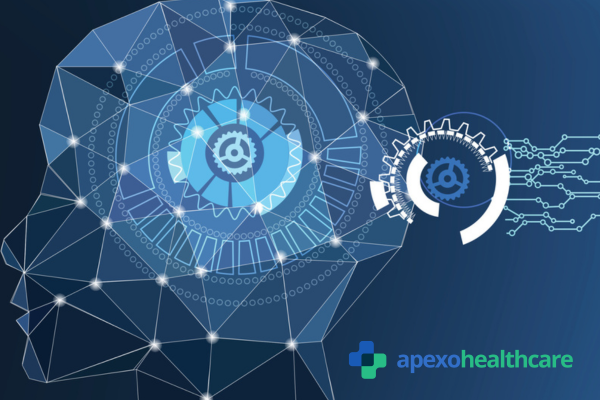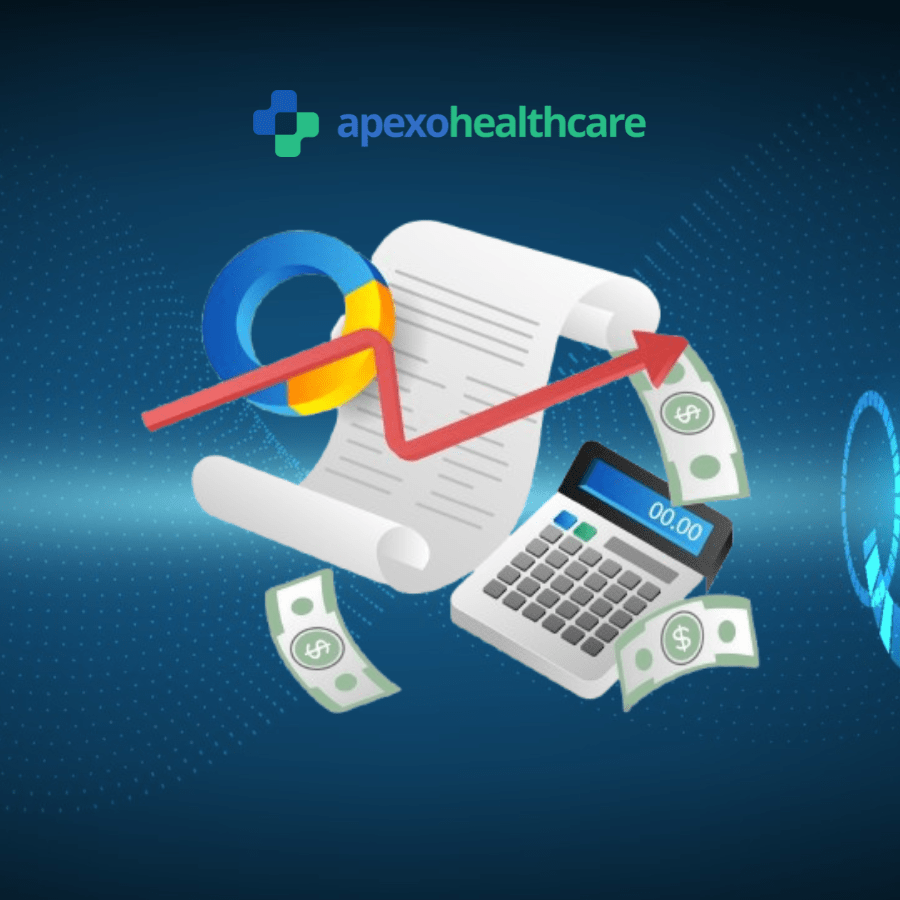
In today’s fast-paced healthcare landscape, Revenue Cycle Management (RCM) has become a critical component for the financial health of medical practices. 💼💰 Yet, many healthcare providers struggle with inefficient processes, billing errors, and delayed payments. Are you tired of leaving money on the table due to outdated RCM practices?
Enter the game-changing duo of technology and automation in RCM, particularly in medical coding. 🖥️🤖 These innovations are revolutionizing how healthcare organizations manage their financial operations, from patient registration to claim submission and payment collection. But how exactly can these advancements benefit your practice? In this blog post, we’ll explore the transformative power of technology in RCM, diving into its impact on medical coding, the advantages for healthcare providers, and what the future holds for this rapidly evolving field.
Understanding Revenue Cycle Management (RCM) in Healthcare
A. Definition and components of RCM
Revenue Cycle Management (RCM) is a critical process in healthcare that encompasses the financial aspects of patient care from initial appointment scheduling to final payment collection. It involves several key components that work together to ensure efficient and accurate billing and reimbursement.
- Patient registration and scheduling
- Insurance verification and authorization
- Charge capture and coding
- Claims submission and follow-up
- Payment posting and reconciliation
- Denial management and appeals
| RCM Component | Description |
|---|---|
| Patient registration | Collecting patient demographics and insurance information |
| Charge capture | Recording services provided for billing purposes |
| Claims submission | Sending claims to insurance companies for reimbursement |
| Payment posting | Applying received payments to patient accounts |
B. Challenges in traditional RCM processes
Traditional RCM processes face numerous challenges that can impact a healthcare provider’s financial health:
- Manual data entry errors
- Delayed claim submissions
- High denial rates
- Inefficient follow-up on unpaid claims
- Lack of real-time financial reporting
These challenges often result in decreased revenue, increased operational costs, and reduced patient satisfaction.
C. Role of medical coding in RCM
Medical coding plays a crucial role in the RCM process by translating healthcare diagnoses, procedures, and equipment into universal alphanumeric codes. This standardization is essential for:
- Accurate billing and reimbursement
- Proper documentation of patient care
- Compliance with regulatory requirements
- Data analysis and reporting
Effective medical coding ensures that healthcare providers receive appropriate compensation for services rendered while maintaining compliance with industry standards.
Now that we have a solid understanding of RCM and its components, let’s explore how technology is transforming this critical aspect of healthcare management.
The Impact of Technology on RCM
Now that we understand the basics of Revenue Cycle Management (RCM) in healthcare, let’s explore how technology is revolutionizing this crucial process.
A. Streamlining workflows
Technology has significantly streamlined RCM workflows, automating many time-consuming tasks. This automation allows healthcare providers to focus on patient care rather than administrative duties. For instance:
- Electronic Health Records (EHRs) integration
- Automated appointment scheduling
- Real-time eligibility verification
B. Reducing errors and improving accuracy
One of the most significant benefits of technology in RCM is the reduction of errors and improved accuracy. Here’s how:
| Traditional Method | Technology-Driven Method |
|---|---|
| Manual data entry | Automated data capture |
| Paper-based records | Digital documentation |
| Human-dependent coding | AI-assisted coding |
C. Enhancing data analytics and reporting
Advanced analytics tools have transformed how healthcare providers interpret and use data:
- Real-time financial performance tracking
- Predictive analytics for revenue forecasting
- Customizable dashboards for quick insights
D. Improving patient experience
Technology in RCM doesn’t just benefit providers; it also enhances the patient experience:
- Online bill pay options
- Transparent cost estimates
- Simplified insurance claim processes
By leveraging technology, healthcare providers can create a more efficient, accurate, and patient-friendly Revenue Cycle Management system. Next, we’ll delve into how automation is specifically impacting medical coding, a critical component of RCM.

Automation in Medical Coding
As we delve deeper into the technological advancements in Revenue Cycle Management, it’s crucial to explore the transformative role of automation in medical coding. This area has seen significant improvements, streamlining processes and reducing errors.
AI-powered coding assistance
Artificial Intelligence (AI) has revolutionized medical coding by providing intelligent assistance to coders. AI algorithms can analyze medical documentation and suggest appropriate codes, significantly reducing the time and effort required for manual coding. Here’s a comparison of manual vs. AI-assisted coding:
| Aspect | Manual Coding | AI-Assisted Coding |
|---|---|---|
| Speed | Slower | Faster |
| Accuracy | Prone to human error | Higher accuracy |
| Consistency | Varies | Consistent |
| Learning curve | Steep | Shorter |
Natural Language Processing for documentation review
Natural Language Processing (NLP) technology has become a game-changer in medical coding. It can:
- Interpret unstructured clinical notes
- Extract relevant information for coding
- Identify missing or incomplete documentation
This technology not only improves coding accuracy but also enhances the overall quality of medical records.
Automatic code suggestion and validation
Automated systems now offer real-time code suggestions and validation, which:
- Reduce coding errors
- Ensure compliance with coding guidelines
- Expedite the coding process
- Minimize claim denials due to coding inaccuracies
Continuous learning and improvement of coding algorithms
One of the most exciting aspects of automation in medical coding is the continuous improvement of algorithms. These systems:
- Learn from new cases and coding decisions
- Adapt to changes in coding guidelines
- Improve accuracy over time
- Provide insights for process optimization
With these advancements, healthcare providers can expect more efficient and accurate coding processes, leading to improved revenue cycle management. Next, we’ll explore the broader benefits of technology-driven RCM for healthcare providers.

Benefits of Tech-Driven RCM for Healthcare Providers
Technology-driven Revenue Cycle Management (RCM) offers numerous advantages for healthcare providers. Let’s explore these benefits in detail:
A. Faster reimbursement cycles
Tech-driven RCM significantly accelerates the reimbursement process. By automating claim submission and follow-ups, healthcare providers can:
- Reduce manual errors
- Submit claims faster
- Track claim status in real-time
- Receive payments more quickly
B. Reduced claim denials and rejections
Automation in RCM helps minimize claim denials and rejections by:
- Identifying potential issues before submission
- Ensuring accurate coding and documentation
- Automatically verifying insurance eligibility
C. Improved compliance and reduced audit risks
Technology enhances compliance and reduces audit risks through:
- Automated updates to coding guidelines
- Built-in compliance checks
- Detailed audit trails for all transactions
D. Cost savings through increased efficiency
Implementing tech-driven RCM leads to substantial cost savings:
| Area of Improvement | Cost Saving Potential |
|---|---|
| Reduced labor costs | Up to 30% |
| Decreased errors | Up to 20% |
| Faster collections | Up to 15% |
E. Better resource allocation
With automation handling routine tasks, healthcare providers can:
- Focus staff on complex cases requiring human expertise
- Allocate resources to patient care and experience improvement
- Invest in strategic initiatives for long-term growth
By leveraging technology in Revenue Cycle Management, healthcare providers can streamline operations, improve financial performance, and ultimately deliver better patient care. Next, we’ll explore the steps involved in implementing technology in RCM to achieve these benefits.

Implementing Technology in RCM
Now that we’ve explored the benefits of tech-driven RCM, let’s delve into the practical steps of implementing technology in your Revenue Cycle Management processes.
Assessing current RCM processes
Before introducing new technology, it’s crucial to evaluate your existing RCM workflows. This assessment helps identify bottlenecks, inefficiencies, and areas ripe for automation. Consider the following:
- Claim submission and processing times
- Denial rates and reasons
- Patient payment collection efficiency
- Staff productivity and task distribution
Selecting appropriate RCM software and tools
Choosing the right technology is critical for successful RCM implementation. Consider these factors when selecting RCM software:
- Scalability
- Integration capabilities
- Customization options
- Compliance with healthcare regulations
- User-friendliness
| Feature | Importance | Considerations |
|---|---|---|
| Scalability | High | Ability to grow with your organization |
| Integration | Critical | Seamless connection with existing systems |
| Customization | Medium | Tailoring to specific organizational needs |
| Compliance | Essential | Meeting HIPAA and other regulatory requirements |
| User-friendliness | High | Ease of adoption by staff |
Training staff on new technologies
Effective training is key to maximizing the benefits of RCM technology. Develop a comprehensive training program that includes:
- Hands-on workshops
- Online tutorials and resources
- Ongoing support and refresher courses
- Feedback mechanisms for continuous improvement
Integrating with existing systems
Seamless integration ensures a smooth transition and prevents disruptions in your revenue cycle. Consider these steps:
- Map out data flows between systems
- Conduct thorough testing before full implementation
- Develop contingency plans for potential issues
- Establish a phased rollout approach
By following these steps, healthcare providers can successfully implement technology in their RCM processes, paving the way for improved efficiency and financial performance. Next, we’ll explore future trends in RCM technology that will shape the industry in the coming years.

Future Trends in RCM Technology
As technology continues to evolve, Revenue Cycle Management (RCM) in healthcare is poised for significant advancements. Let’s explore some of the exciting future trends that are shaping the landscape of RCM technology.
Blockchain for secure data management
Blockchain technology is revolutionizing data security in healthcare. Its decentralized nature ensures that patient information and financial data remain tamper-proof and easily accessible to authorized parties. Here’s how blockchain is transforming RCM:
- Enhanced data integrity
- Improved interoperability between healthcare systems
- Streamlined claims processing and faster reimbursements
Predictive analytics for revenue forecasting
Predictive analytics is becoming an indispensable tool for healthcare providers to optimize their revenue streams. By leveraging historical data and advanced algorithms, organizations can:
- Anticipate cash flow fluctuations
- Identify potential payment delays
- Optimize resource allocation
| Benefit | Impact on RCM |
|---|---|
| Accurate forecasting | Better financial planning |
| Early risk detection | Proactive intervention |
| Improved cash flow | Enhanced financial stability |
Machine learning for continuous process optimization
Machine learning algorithms are transforming RCM by continuously analyzing and improving processes. This technology:
- Identifies inefficiencies in billing and coding
- Automates routine tasks, reducing human error
- Adapts to changing regulations and payer requirements
Telemedicine integration in RCM
The rise of telemedicine is reshaping healthcare delivery and, consequently, RCM processes. Integration of telemedicine in RCM systems offers:
- Real-time eligibility verification for virtual visits
- Automated coding for telehealth services
- Seamless billing integration for remote consultations
As we look towards the future, these technological advancements promise to revolutionize Revenue Cycle Management, making it more efficient, accurate, and adaptable to the evolving healthcare landscape.

Technology and automation have revolutionized Revenue Cycle Management in healthcare, particularly in the realm of medical coding. By streamlining processes, reducing errors, and improving efficiency, these advancements have significantly enhanced the financial performance of healthcare providers. The integration of AI-powered tools, machine learning algorithms, and automated coding systems has not only accelerated claims processing but also improved accuracy and compliance.
As the healthcare industry continues to evolve, embracing technological solutions in RCM is no longer optional but essential for success. Healthcare providers must prioritize investments in RCM technology to stay competitive, improve patient care, and optimize their financial operations. By doing so, they can navigate the complex healthcare landscape more effectively, ensuring long-term sustainability and growth in an increasingly digital world.
